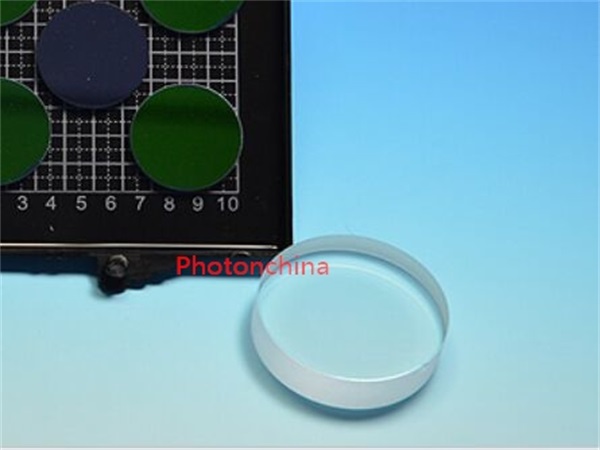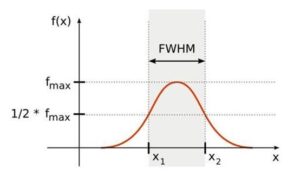Fabry Perot Etalon, namely F-P Etalon.
Fabry Parot Etalon is a high-resolution interference spectrometer with wide applications, which include high-resolution spectroscopy, the study of spectral lines with very close wavelengths, such as the isotope spectrum of elements, the hyperfine structure of the spectrum, the small frequency shift in light scattering, the Doppler shift of spectral lines caused by atomic movement, and the internal structure shape of spectral lines.
It can also serve as a high demanding optical filter and a precision wavelength meter. In the laser system, etalon may narrow the spectral line in the cavity or make the laser system operate in a single mode. As a bandwidth control and tuning device in broadband picosecond lasers, it detects and analyzes the spectral components in the laser.
The predecessor of etalon is Fabry Perot interferometer. The interferometer is based on the principle of multi beam interference, which is composed of two parallel plates ( P1 and P2). The inner side of plates are coated with high reflection film. The light incident into the plate will be reflected for many times, projecting an interference pattern of light and dark.
The distance between P1 and P2 from the interferometer is variable, while the distance between P1 and P2 from the etalon is fixed.
Use of Etalon and Selection of Substrate Materials
Etalons, when used in transmission mode, have a series of transmittance peaks with periodic frequency spacing and are typically used in telecom for wavelength locking. Etalons are characterized by their Free Spectral Range (FSR) – the frequency spacing between peaks – and their Finesse – which essentially governs the shape of the transmission peaks.
Etalon filters typically consist of a single spacer layer with two reflector stacks on either side.
For FSR values below 1000 GHz, the spacer is usually fabricated from a substrate material (rather than grown in thin film deposition). To achieve etalon quality polishing the parallelism of the substrate needs to be better than 1-5 arc-seconds.
Different substrate materials are chosen depending on the application – fused silica is used when the etalon FSR and peak variation with temperature is to be minimized while Si is used when a high FSR temperature coefficient is required for thermal tuning.
Photonchina fabricates custom high quality fused silica and Si etalons at competitive prices with FSR values in the range of 12.5 GHz to 500 GHz.
The Function of Etalon
Simply put, the Fabry Perot Etalons is like a ruler. We can measure the length of an object in space by the mark of a ruler, such as the length of a pencil.
The etalon can be used to measure the frequency, such as the frequency of laser。
Like the measuring ruler, etalon should be accurate, not only with high accuracy, but also with stable performance.
At present, etalon is widely used in optical fiber sensing and optical fiber communication fields, such as measuring high-precision spectrum, spectral line width, Doppler frequency shift, etc.
With the continuous progress of modern communication and measurement technology, the requirements for wavelength output and optical channel locking technology are increasingly high. The design of etalon with high stability structure is in perfect harmony with the development of communication technology and measurement technology required today, so it has become the leading technology of optical communication and optical measurement instruments.
Etalon made by Photonchina applies the principle of multi-beam interference to form a multi-beam interference cavity by optically coating the two surfaces of the cavity with different reflectivity film. In fact, it is also a narrowband filter seen often in the optical communication industry.
Types of Etalon
The optical etalon can be a single-piece structure with parallel reflective surfaces, the solid-state etalon made of fused silica material, or an air-gap structure using a Fabry-Perot cavity double-reflective mirror, i.e., the air-gap etalon.
-
Solid Etalon:
Photonchina Specifications:
Material: H-K9L/BK7, Quartz Glass, Zerodur(Schott),ULE (Corning), etc.
Flatness:λ/60、λ/80、λ/100;
Finesse:F≥25、F≥35、F≥45;
Diameter (mm): Size: 1×1mm~25.4×25.4mm;φ3~φ25.4mm;
Thickness(mm):0.5, 1, 2, 3, 5, 10, 20, 30, 40, 50 etc.
FSR(GHz):1, 1.3, 2.6, 3.4,5, 10, 34, 50, 103, 184 etc.
Note: Customized products are available upon request.
-
Air Gap Etalon:
Photonchina Specifications:
Material: H-K9L/BK7, Quartz Glass, Zerodur(Schott),ULE (Corning), etc.
Flatness:λ/60、λ/80、λ/100;
Finesse:F≥25、F≥35、F≥45;
Size: 1×1mm~25.4×25.4mm;φ3~φ25.4mm;
Thickness(mm):0.5, 1, 2, 3, 5, 10, 20, 30, 40, 50 etc.
FSR(GHz):1.5, 3, 3.75, 5, 15, 30, 50, 107, 268 etc.
Note: Customized products are available upon request.
Parameters of Etalon
A Solid Etalon (also can be regarded as a narrowband filter) is used to select a periodically spaced frequency grid from a broad spectral range. The key specifications of these filters are Free Spectral Range (FSR), and Finesse.
The FSR is equal to the spacing between the transmittance peak frequencies. The Finesse, we typically use it to describe the sharpness of the transmittance peaks and is equal to the FSR divided by the full width at half maximum (FWHM) of the transmittance peak frequencies.
The solid etalon is a version of a simple etalon, whose structure has been Mirror+Spacer+Mirror, in which thin film dielectrics serve as the mirrors and a solid glass substrate function as the spacer. Photonchina’s solid etalons are made up of two plane parallel reflecting surfaces, side A & B, separated by a quartz substrate with thickness “d”.
The etalon is specified mainly by two parameters: Free Spectral Range (FSR), and Finesse.
Free Spectral Range (FSR) [GHz]
Free Spectral Range,FSR: Distance between two adjacent peaks.
The Free Spectral Range (FSR) is the separation between two adjacent peak frequencies fi and fi+1:
FSR = fi – fi+1
Neglecting the effect of dispersion in the quartz spacer, the FSR can be predicted by the following equation:
FSR = c/( 2·n·d·cos(Ø) )
where c is the speed of light, n is the refractive index of the spacer, d is the quartz substrate thickness, and Ø is the angle of incidence. For Ø=0 and constant refractive index, the FSR is inversely proportional to the spacer thickness:
FSR ~ d-1
Then small changes in FSR can be related to small changes in spacer thickness:
D(FSR)/FSR = -D(d)/d
Finesse (F)
Within a FSR range, the maximum number of fringes that can be resolved between two adjacent fringes. The greater the fringe fineness, the finer and sharper the fringe, and the better the wavelength locking performance.
The finesse (F) characterizes the sharpness of the peak frequencies of a etalon:
F=FSR/(-3 dB BW)
where -3 dB BW is the bandwidth at –3.0 dB (or the full width at half maximum) of the peak frequencies.
The finesse is also a function of the reflectance, R, of the reflecting surfaces A & B:
F = pR1/2/(1-R)












